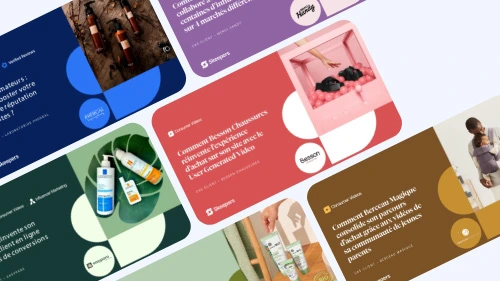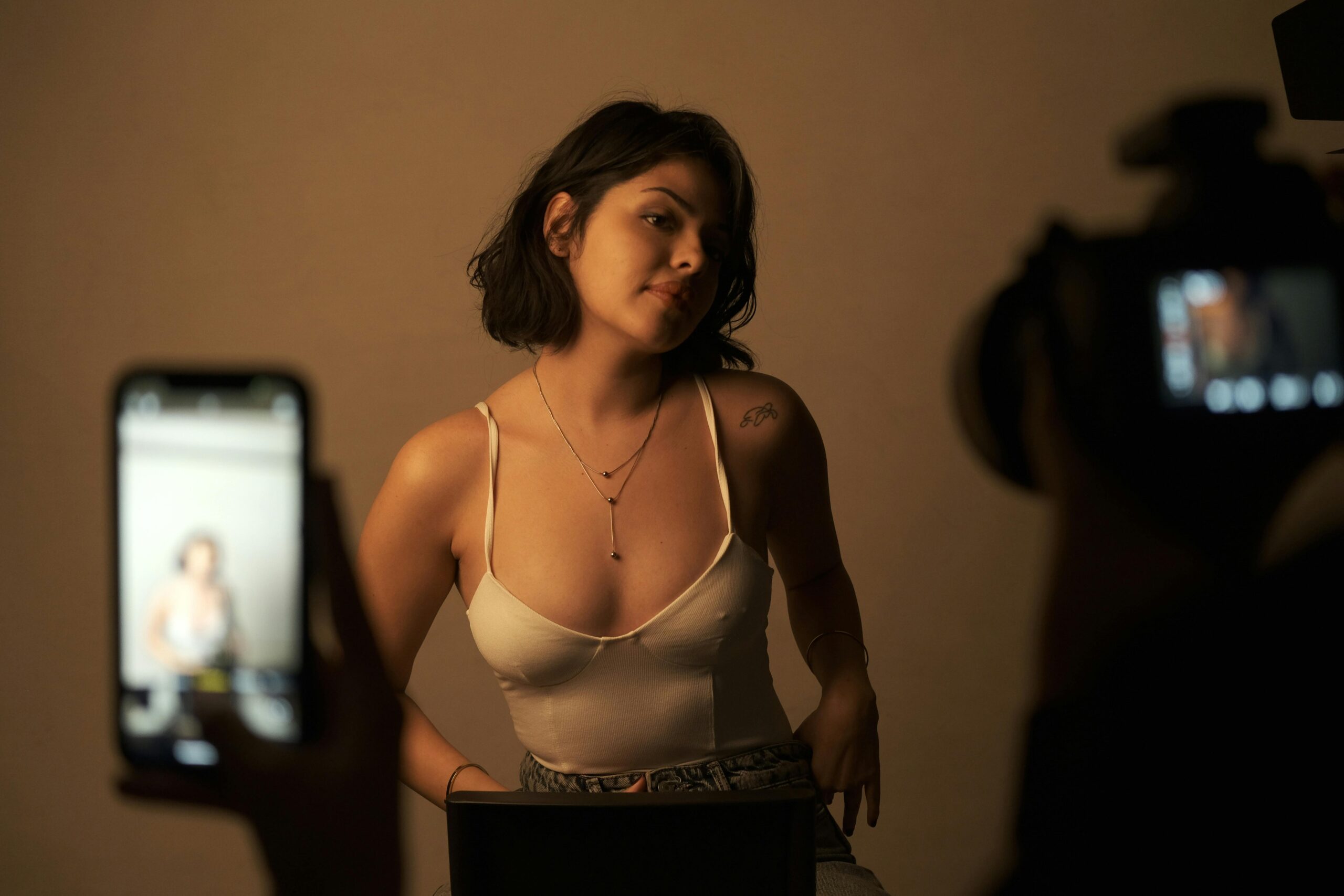The way people shop for fashion has changed and it’s not just about e-commerce anymore. Social commerce has exploded in popularity, turning platforms like Instagram, TikTok, and Pinterest into full-fledged shopping destinations. What was once a space for scrolling and inspiration is now is now an essential part of the customer journey in fashion, where customers discover, engage with,...
The way people shop for fashion has changed and it’s not just about e-commerce anymore. Social commerce has exploded in popularity, turning platforms like Instagram, TikTok, and Pinterest into full-fledged shopping destinations. What was once a space for scrolling and inspiration is now is now an essential part of the customer journey in fashion, where customers discover, engage with, and buy their next favorite outfit, all without ever leaving the app.
According to Statista, the global social commerce market was valued at $724 billion in 2022 and is projected to reach $6.2 trillion by 2030, with fashion leading the charge as one of the most purchased categories. Platforms are continuously evolving to meet this demand, rolling out features like Instagram Checkout, TikTok Shop, and Pinterest Product Pins, which make the path from discovery to purchase faster and more visual than ever.
But it’s not just about where people shop. It’s about how. The traditional customer journey: awareness, consideration, purchase has been compressed into a few scrolls and taps. A creator’s styling video, a user’s candid try-on, or a viral haul can instantly turn a curious viewer into a committed customer.
Welcome to fashion’s new reality: where content is commerce, and community is the storefront.
From Browsing to Buying: A Shorter, Shoppable Journey

The customer journey in fashion has undergone a dramatic shift. What once took weeks of browsing websites and comparing products now happens in minutes or even seconds on social platforms.
Platforms like Instagram and TikTok have introduced native shopping features that remove friction from the buying process. For instance, Instagram Shopping allows users to tap on a creator’s outfit and purchase it instantly, while TikTok Shop enables brands and creators to link products directly in videos or livestreams. This has resulted in an accelerated decision-making process driven by peer validation and social proof.
Nearly 71% of Gen Z consumers are likely to purchase a product directly from a social media platform, and 72% say they discover fashion brands through creators on TikTok or Instagram.
This evolution has fundamentally changed the fashion’s customer journey. Discovery now happens on a For You page, evaluation happens through comments and UGC, and conversion happens on the same screen, all within minutes.
As a result, brands that embrace this shift are reaping the rewards. By meeting consumers where they scroll and shop they’re creating more engaging, frictionless experiences that boost conversion rates and customer satisfaction.
Discovery Now Happens on Social

The days when shoppers discovered fashion brands primarily through search engines or window shopping are behind us. Today, social platforms are the new storefronts, and discovery is driven by scrolls, swipes, and shares.
More than 66% of consumers say they’ve purchased a product after seeing it on social media, according to a 2023 Stackla report. And for Gen Z and Millennials, platforms like Instagram, TikTok, and Pinterest aren’t just entertainment, they’re trusted sources of product discovery and style inspiration.
This shift has redefined the top-of-funnel strategy for fashion brands. Instead of relying solely on paid search or traditional display ads, brands now focus on being present in the everyday content their audiences consume. This means partnering with influencers, encouraging user-generated content (UGC), and leaning into short-form video that organically showcases their products in action.
Reels, TikToks, and even Pinterest Idea Pins provide immersive, visual experiences that static ads can’t replicate. The authenticity of creators trying on pieces, styling them, and sharing honest feedback builds immediate trust. In fact, consumers are 2.4x more likely to say UGC is more authentic than brand-created content (Stackla).
Petit Bateau humanizes its online shop with user-generated videos
Petit Bateau wanted to bring its community closer by encouraging customers to share glimpses of their family life through short videos featuring the brand’s products. Using Skeepers’ solution, the brand made it easy for customers to create, optimize, and upload these videos directly to product pages. The tool helped identify ideal creators, streamline the video creation process, auto-edit for e-commerce, and track performance.
The result? 62 authentic videos shared, a 23% increase in video completion rate, and a 12% boost in conversion on product pages featuring user-generated content.
Influencers & UGC as the New Sales Associates
In the evolving customer journey in fashion, the role of the traditional sales associate has found a powerful new counterpart: influencers and everyday shoppers.
From Instagram Reels to TikTok try-ons, creators are now the stylists, reviewers, and trusted advisors for millions of online fashion consumers. 61% of shoppers say they trust influencer recommendations as much as advice from friends or family. This shift has made influencer and user-generated content (UGC) essential in driving not just awareness, but actual sales.
Authentic content like outfit hauls, unboxings, and real styling videos allows shoppers to see how garments look, move, and fit on real people, not just models. These videos offer honest feedback and show how a piece can work in everyday life, removing the guesswork and boosting confidence to buy.
Fashion brands that leverage UGC and influencer content across channels are seeing the benefits. In fact, product pages with UGC see a 161% lift in conversion compared to those without it.
The Role of Community in Retention
When it comes to customer journey in fashion, the relationship doesn’t end at checkout. it begins there. Social commerce isn’t just transforming how consumers shop; it’s reshaping how they stay connected to brands.
Today’s shoppers crave more than products, they want participation. Community-driven features like polls and comment replies have become powerful tools to keep followers engaged long after their first purchase.
Fashion brands are tapping into this shift by inviting their audiences to co-create everything from trends to collections. Whether it’s letting followers vote on upcoming designs or replying to DMs and comments in real-time, brands are humanizing their voice and building emotional loyalty.
Fashion loyalty today isn’t about points or perks—it’s about belonging. When customers feel seen and heard, they return not just to shop, but to participate.
Data & Personalization: Why Social Selling Is Smarter Selling
One of the biggest advantages of social commerce is its ability to turn every scroll, like, and comment into actionable insight. Unlike traditional retail, where customer behavior is harder to track in real time, social platforms offer a goldmine of data that makes customer journey in fashion more intelligent and adaptive.
Through engagement metrics, trend analysis, and creator performance, brands can see what resonates with their audience instantly. And with the help of AI, platforms like Instagram and TikTok now personalize shopping experiences by surfacing the right product to the right person at exactly the right moment.
Take for example, La Redoute. The brand ran A/B tests over a three-month period on various products to evaluate the impact of consumer videos on conversion rates. By comparing product pages with and without these videos, the brand found that user-generated content helped overcome real shopper hesitations and significantly boosted the add-to-cart rate.
Surprisingly, the tests also highlighted strong performance in some categories over other areas where video impact had been underestimated. The results confirmed that consumer videos offer meaningful value to shoppers, driving stronger engagement and ultimately increasing conversions.
Consumer Videos increased the add-to-cart rate by 50% and improved video view rates by 12%
For fashion brands, this means smarter marketing with less guesswork. Instead of launching broad campaigns and hoping they land, brands can now deliver highly curated experiences that feel intuitive and inspiring to the consumer.
The result? More conversions, better retention, and a stronger bond between brand and buyer—all powered by social data.
Challenges for Fashion Brands
As exciting as social commerce is, it comes with its own set of challenges, especially for fashion brands navigating this fast-changing space.
Managing Content at Scale
With creators, customers, and influencers generating content across platforms, brands are drowning in a flood of assets. Organizing, approving, and repurposing UGC efficiently becomes a major operational task.
Consistency in Brand Voice
While influencer partnerships drive reach and authenticity, they also mean handing over some creative control. Brands must strike the right balance between creative freedom and maintaining a consistent aesthetic and tone especially in the fashion world where visual identity is everything.
Platform Volatility
From shifting algorithms to regulatory threats (think TikTok bans or Instagram engagement drops), fashion marketers need to remain agile. What works today might not tomorrow, and putting all your eggs in one social basket is risky.
Authenticity vs. Performance
There’s growing pressure to perform, but that can’t come at the expense of credibility. Today’s shoppers can spot inauthentic sponsored content from a mile away. Fashion brands need to double down on realness especially when leveraging influencer marketing and UGC.
How to Adapt: Tips for Fashion Marketers

To stay competitive and have a seamless customer journey in fashion, brands need more than good products, they need smart strategies built for a social-first world. Here’s how to adapt:
Invest in Social-First Creatives
Forget traditional ads. Prioritize mobile-optimized, lo-fi, and native content that mirrors what your audience already consumes on TikTok, Instagram, and YouTube Shorts. Partner with creators who know how to speak your audience’s language.
Turn Gifted Reviews and Influencer Content Into Shoppable Assets
Transform organic influencer posts and customer videos into performance-driven content. Use them in paid ads, product pages, or email campaigns to build trust and shorten the conversion path.
Use UGC to Shorten the Customer Journey in Fashion
From product discovery to purchase, UGC plays a role at every touchpoint. Authentic try-ons, unboxings, and testimonials eliminate buyer hesitation and drive faster decisions.
Prioritize Community Over Promotion
Build loyalty by treating your audience like collaborators, not customers. Run polls on product designs, respond to comments, feature followers in your content, and create spaces where your fans feel seen.
Conclusion
The customer journey in fashion is no longer a straight line from ad to checkout, it’s a dynamic, interactive loop powered by creators, communities, and conversations.
Social commerce has redefined how fashion brands attract, convert, and retain their audiences. Discovery now starts on a reel. Influence comes from a fellow shopper’s honest review. Loyalty is built through comment sections, live chats, and co-created trends.
To stay relevant, fashion marketers must embrace this shift. That means integrating influencer content and gifted reviews into your strategy, using real-time data to personalize messaging, and showing up authentically on the platforms where your customers live.














